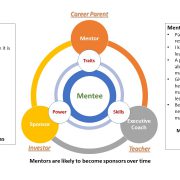Resilience – Does your environment help create resiliency in you? (Day 5)
Ensure your environment helps in creating resiliency in you
Making Changes in Colleges & Workplaces
Link: https://www.academicimpressions.com/blog/building-student-resilience-grit/
In our final post, we showcase some real cases of how resiliency can be taught and incorporated at colleges and at the workplace.
Case Study 1: Morrisville State:
- Morrisville State University is an agricultural and technical college in New York
- They have rolled out a student strengths inventory to measure non-cognitive student characteristics e.g. self-efficacy, resilience, social comfort, campus engagement etc.
- The initiative is spear-headed by Dean of Enrollment, Robert Blanchet. The premise behind this inventory is to gauge student’s willingness to engage in campus activities as that is an indicator of student retention.
- This will help identify students that are likely to succeed and be resilient through college challenges.
Similar Case Studies:
- The Undergraduate Student Government at Tulane University has a Resilience Cooperative that helps students develop the skills they need to cope with adverse situations.
- Notre Dame College has a First Generation Center that provides students with resiliency coaching. This is essential to their campus as approximately 40% of their students are the first in their family to attend college.
Case Study 2: Deloitte:
http://ceoroundtable.heart.org/wp-content/uploads/2018/05/ucm_496856.pdf
- Deloitte has incorporated a holistic program called Empowered Well-being which helps support their employees through stressful times and to ensure they are able to be focused and innovative at work.
- They make it a point to “collectively disconnect” during holidays and have a year-end shutdown between Christmas and New Year’s to allow employees to spend time with loved ones.
- Vitals dashboard allows organization to preemptively identify employees that may be at the risk of burnout through a data-driven approach.
- The organization provides resources such as Bounce back and Upside of Stress which feature guides and micro-learning to teach employees stress management and mindfulness. The effects are evident: more than 98% of respondents said they benefitted from participating in the program and 100% said they would recommend the course to others.
- Their Family Leave Program provides greater support for live events and family obligations.
- Employees are offered two sabbatical programs to allow for career, personal and professional interests exploration.
From these examples, it is evident that implementing resilience is a matter of priority. There are simple yet effective steps we can all take at our organizations to achieve this. Our hope is that through these examples and the previous posts in this series, you have learned about the importance of resiliency and how it can be incorporated into your life. Resilience is also a prime goal of the WINGS mentoring program- you can learn more here: https://wingsforgrowth.org/
Thank you for reading!
About the Author:
Roshni Ramaswamy has recently graduated from Georgia Institute of Technology, majoring in Chemical and Biomolecular Engineering and a proud mentee of the WINGS Signature Program. She is a Project Engineer at Environmental Planning Specialists. She enjoys sharing her perspectives on mentoring, resilience, academic life, professional development among a myriad other topics. Follow Roshni at the link shared for her viewpoints.











